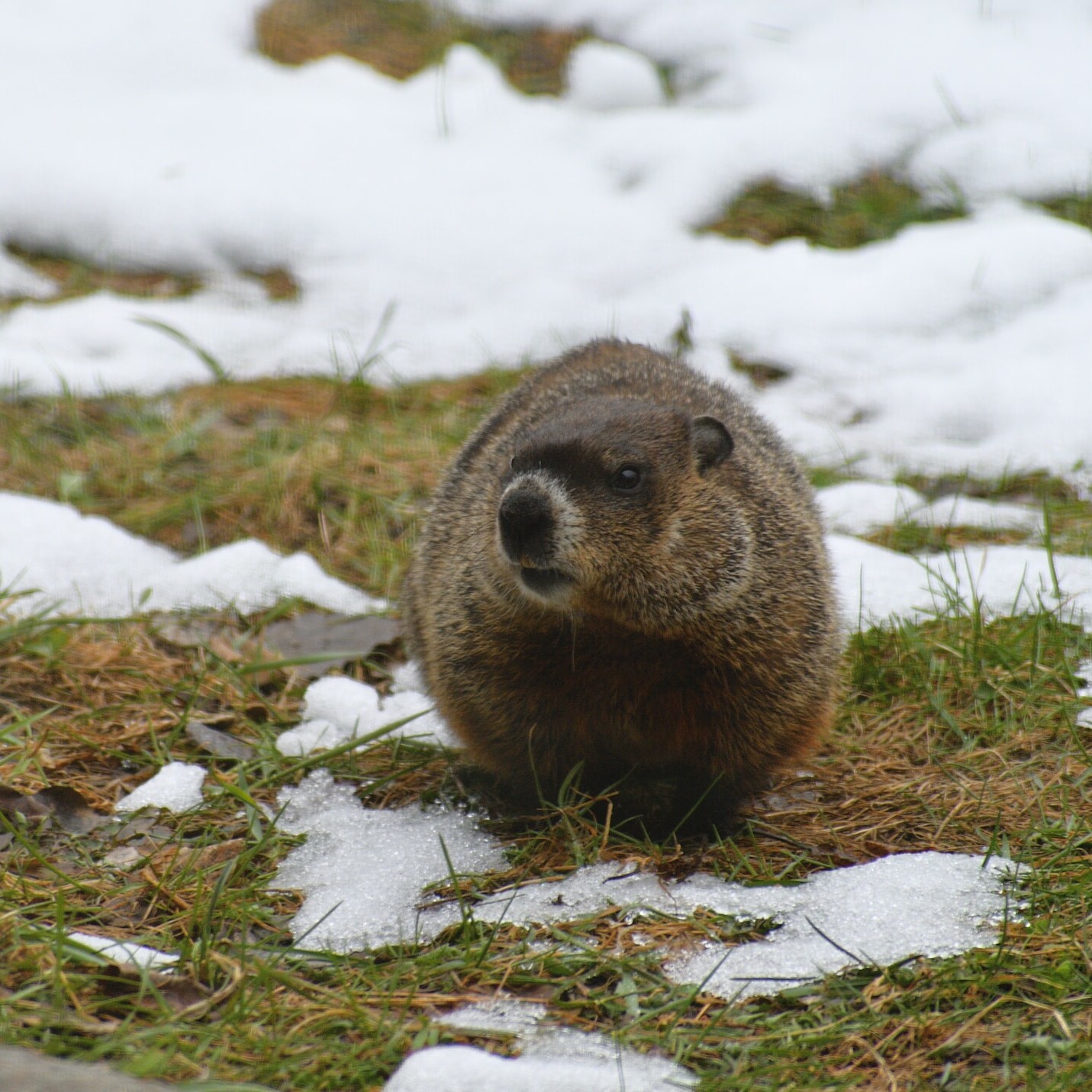SKUNKS
The Striped Skunk weighs from 4-10 pounds and is 24-30 inches long. Skunks are easy to recognize with their distinct black and white coloring. The Striped Skunk has two white bands that run from the head and down each side of the back. Skunks are mostly nocturnal, and forage at night for a variety of foods. They are omnivores, eating both plant and animal matter, but prefer insects. They sleep during the day, usually in underground dens often dug by other animals. Aside from being a carrier of rabies, another concern is the odor. Skunks very frequently inhabit human dwellings. They’ll live under sheds, porches, decks, etc. They may discharge or scent mark in these areas, creating an unpleasant odor.

GROUNDHOGS
Groundhogs are rodents, and adults average 8-10 pounds. They give birth in spring to 3-6 young. They can live up to six years in the wild. They are primarily herbivorous, eating a wide variety of plants. Groundhogs are diggers. They excavate tunnels and burrows underground, in which they live and raise young. The tunnel may have up to five entrances and 50 feet of total tunnel distance. They create a den to live in, and to hibernate in. They are primarily active during the daytime and are considered agricultural pests, since they love to eat a wide variety of crops. However, their burrowing habits often cause a bigger problem. Horses can break their legs by stepping into burrows, and when a groundhog digs under a house or deck, the removal of soil can undermine the foundation.

RACCOONS
The Raccoon is a stocky mammal about 2 to 3 feet long, weighing 10 to 30 pounds. It is distinctively marked, with a prominent black “mask” over the eyes and a heavily furred, ringed tail. Raccoons have recently been identified as the major wildlife host of rabies in the United States, primarily due to increased prevalence in the eastern United States. Raccoon Control and Raccoon Removal is the only way to control raccoons and raccoon breeding. Raccoons cause damage or nuisance problems around houses and outbuildings when they seek to gain entrance to attics or chimneys or when they raid garbage in search of food. In many urban or suburban areas, raccoons are learning that uncapped chimneys make very adequate substitutes for more traditional hollow trees for use as den sits, particularly in spring. In extreme cases, raccoons may tear off shingles or fascia boards in order to gain access to an attic or wall space. Raccoon hunts mainly at night for a variety of small animals, fishes, frogs, and crayfish as well as fruits, vegetables and birdseed. Raccoons breed from January through March depending on where in the United States they live. On average four young are born in early April or May, the young stay with the mother until late fall or winter.

VOLES
Voles can be very destructive. This rodent resembles a house mouse, only with a short tail and small ears. Colored brown to gray, voles have a lighter colored belly, an easy difference from mice. Voles grow 4 to 6 inches long. Large incisor top teeth are what distinguish this rodent from a mole. Voles eat vegetation, feeding on roots, bulbs and anything they can find. They cause a lot of destruction by gnawing on young trees and shrubs. They can strip the bark of the plant at ground level, killing or exposing it to insects or diseases. One way to tell if you have voles is to locate runways in the lawn. These 2 inch wide strips meander throughout the lawn at the surface. These strips usually end at a hole, going into an abandoned vole hole. Nicely rounded holes in your yard indicate you have voles. Voles have a tremendous reproductive rate, able to give birth at one month of age. Voles have several litters a year, sometimes seeming to take over.

Environmental Services Pest Control, LLC provides a solution to all these pests with our pest control service.
